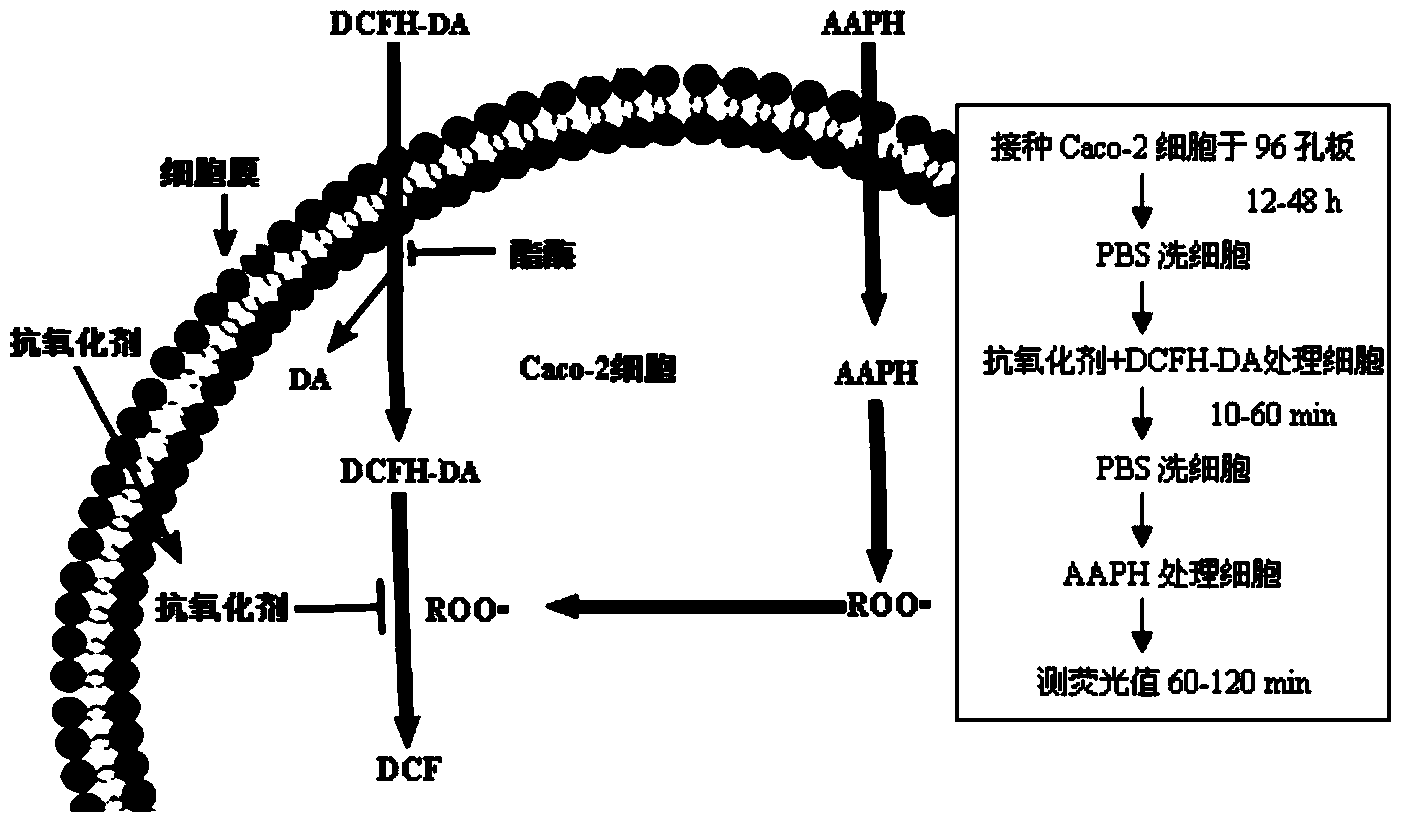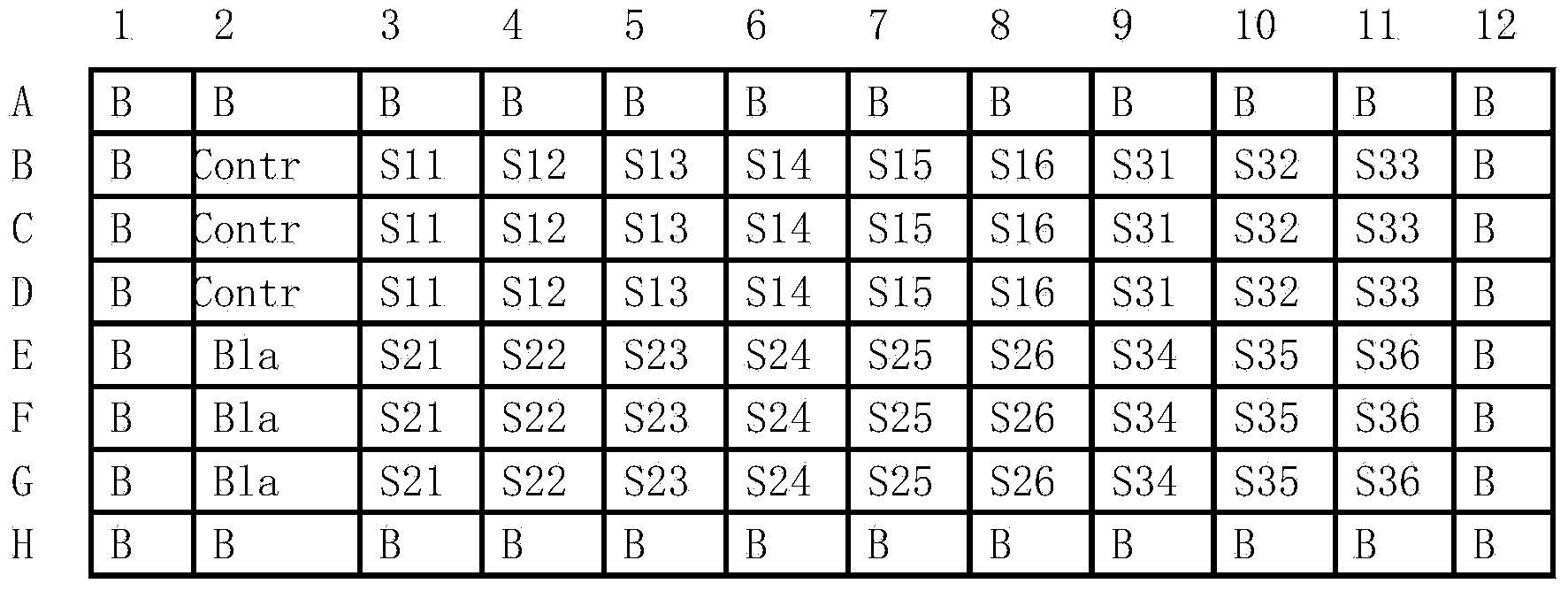Method for quantitatively evaluating antioxidant activity of antioxidant based on Caco-2 cell model
An anti-oxidant activity and antioxidant technology, which is applied in material excitation analysis, fluorescence/phosphorescence, etc., can solve the problems of complex operation process, can not reflect the absorption characteristics of antioxidants, limit practical value, etc., and achieve the effect of high biological relevance.
- Summary
- Abstract
- Description
- Claims
- Application Information
AI Technical Summary
Problems solved by technology
Method used
Image
Examples
Embodiment 1
[0033]Example 1 Determination of Antioxidant Pure Product Cytological Antioxidative Activity
[0034] 1) Dilute 100L of Caco-2 single cell suspension by 5×10 4 The concentration of cells / well was inoculated into a transparent flat-bottomed black 96 microwell plate at 37°C in 5% CO 2 Cultured for 24 hours; human colon adenocarcinoma cell Caco-2 was purchased from the American Type Culture Collection (ATCC) in the United States as a cell line for evaluating the antioxidant activity of antioxidants;
[0035] 2) Remove the growth medium from the 96-well plate in step 1), and wash the adherent cells once with 150L of 1×PBS;
[0036] 3) Prepare different concentrations of quercetin, (-)-epigallocatechin gallate, resveratrol, galangin, kaempferol, and kaempferol in the antioxidant-treated medium containing 60M DCFH-DA Rehmannia flavonoids, phloretin, quercetin-3-G, dihydroquercetin, L-ascorbic acid, rutin, caffeic acid, gallic acid, L-glutathione, (+)-catechin, ( -)- 18 pure antio...
Embodiment 2
[0045] Example 2 Determination of fruit cytology antioxidant activity
[0046] Similar to the steps in Example 1, the cytological antioxidant activities of blueberries and apples were determined to be 6.8±0.4mol QE / 100g fresh fruit and 1.8±0.1mol QE / 100g fresh fruit, respectively.
Embodiment 3
[0047] Example 3 Biocorrelation Analysis of Antioxidant Antioxidant Activity Quantitative Evaluation Method Based on Caco-2 Monolayer Cell Model
[0048] 1) SPF grade male SD rats, weighing 200-250g (about 8-9 weeks old), temperature 22-25°C, relative humidity 65%-75%, adapted to feeding for one week, randomly divided into sample group and control group according to body weight , 6 rats in each group, fasted for 12 hours before the experiment, and had free access to water;
[0049] 2) For the sample group, 0.2mmol / kg·b·w (b·w is the abbreviation of body weight) antioxidant pure product (dissolved in corn oil) was administered to SD rats at one time, with a volume of 1mL / 100g . The control group was gavaged with solvent corn oil;
[0050] 3) Before gavage and 1, 2, 4, 6, 8, and 10 hours after gavage, blood was collected through the tip of the tail, placed in a heparin-anticoagulated test tube, centrifuged at 3500r / min for 10min, and plasma was separated;
[0051] 4) The ORAC...
PUM
 Login to View More
Login to View More Abstract
Description
Claims
Application Information
 Login to View More
Login to View More - R&D
- Intellectual Property
- Life Sciences
- Materials
- Tech Scout
- Unparalleled Data Quality
- Higher Quality Content
- 60% Fewer Hallucinations
Browse by: Latest US Patents, China's latest patents, Technical Efficacy Thesaurus, Application Domain, Technology Topic, Popular Technical Reports.
© 2025 PatSnap. All rights reserved.Legal|Privacy policy|Modern Slavery Act Transparency Statement|Sitemap|About US| Contact US: help@patsnap.com



